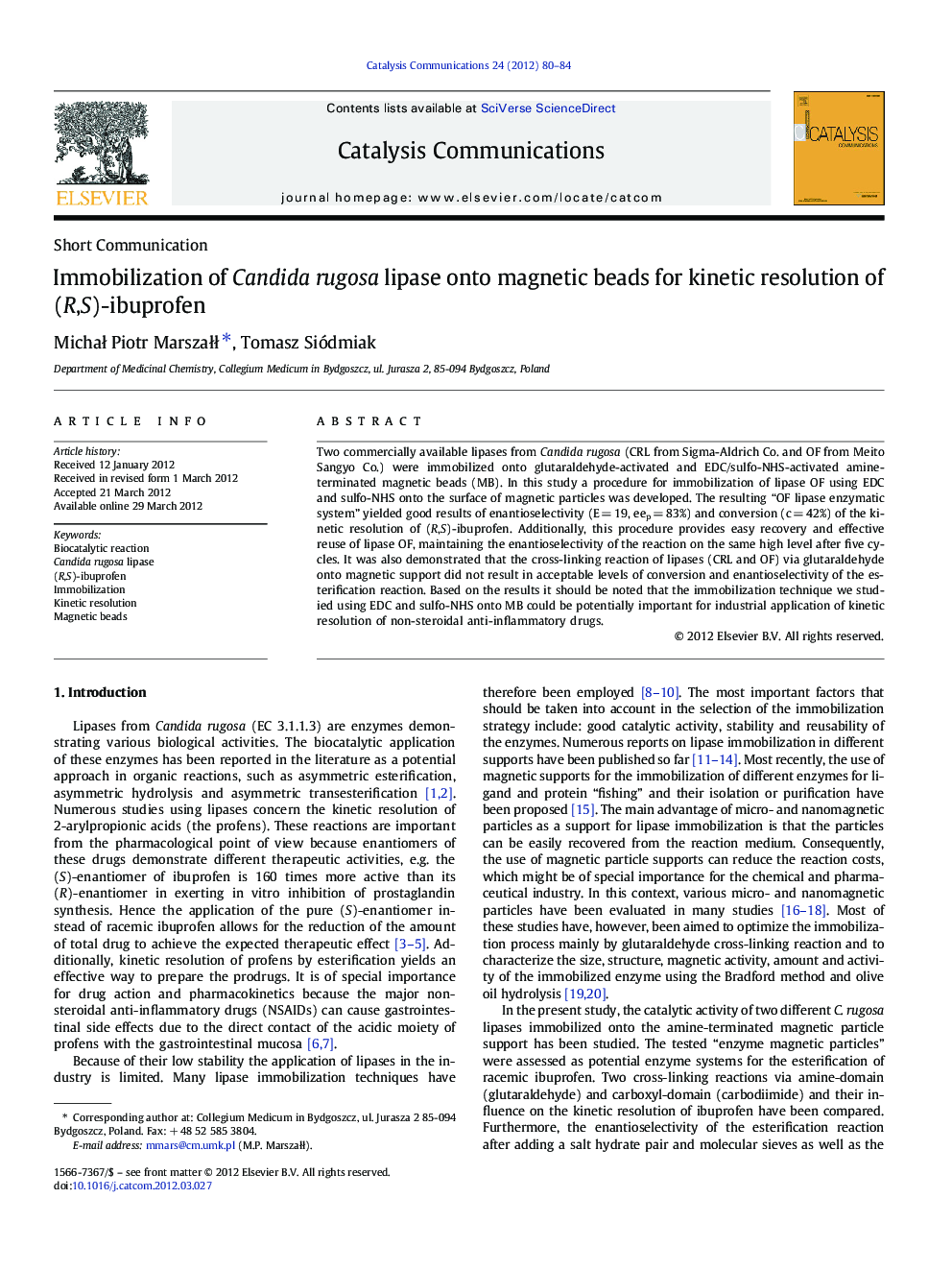| Article ID | Journal | Published Year | Pages | File Type |
|---|---|---|---|---|
| 50607 | Catalysis Communications | 2012 | 5 Pages |
Two commercially available lipases from Candida rugosa (CRL from Sigma-Aldrich Co. and OF from Meito Sangyo Co.) were immobilized onto glutaraldehyde-activated and EDC/sulfo-NHS-activated amine-terminated magnetic beads (MB). In this study a procedure for immobilization of lipase OF using EDC and sulfo-NHS onto the surface of magnetic particles was developed. The resulting “OF lipase enzymatic system” yielded good results of enantioselectivity (E = 19, eep = 83%) and conversion (c = 42%) of the kinetic resolution of (R,S)-ibuprofen. Additionally, this procedure provides easy recovery and effective reuse of lipase OF, maintaining the enantioselectivity of the reaction on the same high level after five cycles. It was also demonstrated that the cross-linking reaction of lipases (CRL and OF) via glutaraldehyde onto magnetic support did not result in acceptable levels of conversion and enantioselectivity of the esterification reaction. Based on the results it should be noted that the immobilization technique we studied using EDC and sulfo-NHS onto MB could be potentially important for industrial application of kinetic resolution of non-steroidal anti-inflammatory drugs.
Graphical abstractFigure optionsDownload full-size imageDownload as PowerPoint slideHighlights► The immobilization of Candida rugosa lipase onto magnetic beads (MB) was performed. ► Immobilized lipase was used in kinetic resolution of (R,S)-ibuprofen. ► Amine-terminated magnetic beads were activated by glutaraldehyde and sulfo-NHS/EDC. ► High enantioselectivity of kinetic resolution using sulfo-NHS/EDC was obtained. ► The sulfo-NHS/EDC-activated MB provides easy recovery and reuse of lipase.
